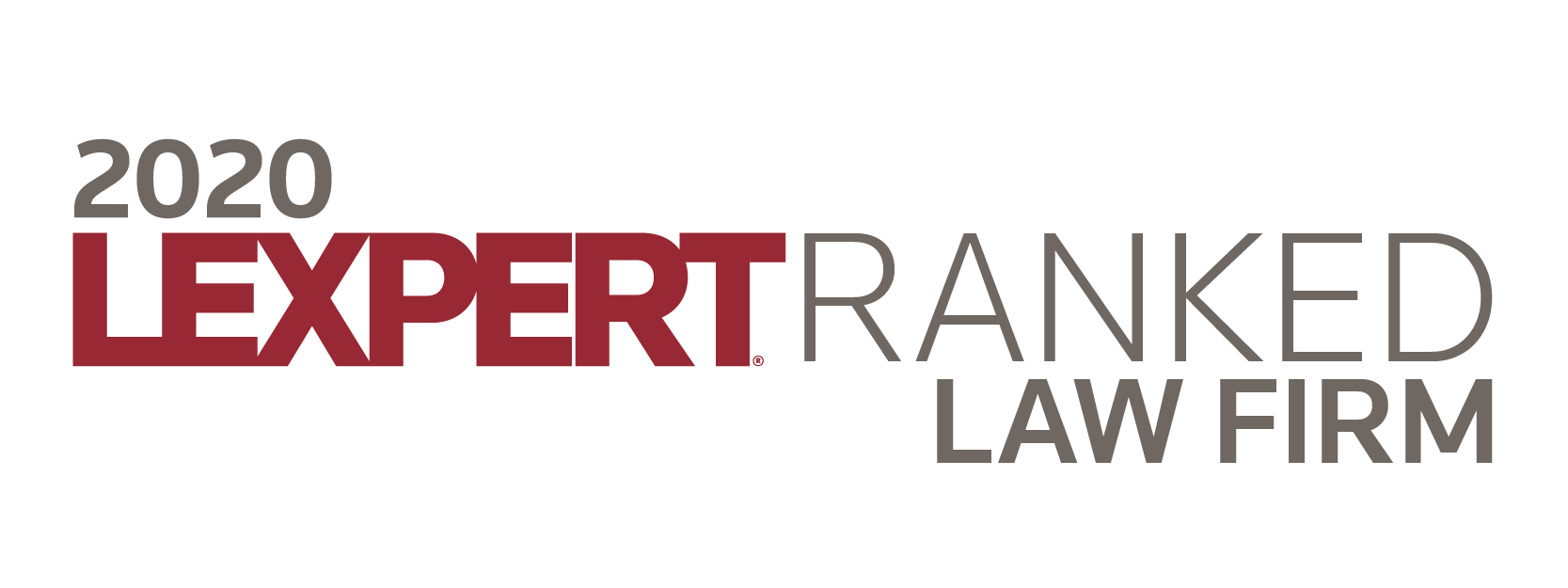Almost two years after the issuance of the Single-use Plastics Prohibition Regulations, where do we stand and how are businesses affected?
On December 20, 2022, the federal government's Single-Use Plastics Prohibition Regulations1 (the “Regulations”) gradually came into force, with the effect, as the name suggests, of prohibiting (or restricting, in certain cases) the manufacture, import and sale of certain single-use plastics that pose a threat to the environment. In principle, it is now prohibited to manufacture, import and sell certain single-use plastic products made entirely or partially of plastic, such as foodservice ware, checkout bags and straws. On June 20, 2024, beverage ring carriers and flexible straws packaged with beverage containers will be added to this list.2 However, there are cases currently pending before the courts that have the potential to change the situation. Currently contested: the Regulations and the Order A contestation to the Regulations has been before the Federal Court since July 15, 2022, in an application for judicial review brought by Petro Plastics Corporation Ltd et al3 (the “Petro Plastics Case”). However, the parties to this case have asked for it to be suspended pending a final judgment in another case4 brought by the Responsible Plastics Use Coalition (the “Coalition Case”).5 In the Coalition case, the validity of the order by which plastic products were added to the list of toxic substances in Schedule 1 of the Canadian Environmental Protection Act (“CEPA”)6 is called into question. The Federal Court of Appeal will soon hear this case and render a judgment that will affect the Petro Plastics case. On November 16, 2023, in the Coalition Case, the Federal Court ruled in favour of the Coalition, retroactively quashing the Order Adding a Toxic Substance to Schedule 1 to the Canadian Environmental Protection Act (the “Order”) and declaring it invalid and unlawful as of April 23, 2021.7 Essentially, the Federal Court had two main reasons for concluding that the registration was illegal. Findings of the Federal Court Order found unreasonable The Federal Court concluded that the Order was unreasonable because the evidence that the federal government had in hand did not support the conclusion that all plastic manufactured articles were toxic within the meaning of CEPA. On the contrary, the evidence showed that certain plastic manufactured articles included in the scope of the Schedule 1 list were not toxic. According to the Federal Court, the government acted outside its authority by listing the broad category of plastic manufactured articles on Schedule 1 in an unqualified manner. Order found unconstitutional The Federal Court also concluded that the Order was unconstitutional because it did not fall within the federal government’s criminal law power. Only substances that are toxic in “the real sense” can be included on the list of toxic substances. They must be substances that are harmful, dangerous to the environment or human life, and truly have the potential to cause harm. In other words, according to the Federal Court, the power to regulate the broad and exhaustive category of “single-use plastics” lies with the provinces. The Attorney General of Canada appealed this decision with the Federal Court of Appeal on December 8, 2023. The Federal Court of Appeal granted a stay of the judgment rendered on November 16, 2023, until disposition of the appeal,8 such that the Order and the Regulations remain in force, at least for the time being. If the Federal Court of Appeal upholds the decision that the Federal Court rendered on November 16, 2023, this will affect the validity of the Regulations. Under section 90 of CEPA, a substance can only be added to Schedule 1 by order if the federal government determines that it is toxic within the meaning of CEPA, and, under section 93 of CEPA, the government only has the power to regulate such a substance after it has been added to the list. The plastic items in question Subject to the outcome of the court cases discussed above, here is the exhaustive list of items that the Regulations prohibit: Single-use plastic ring carriers designed to surround beverage containers in order to carry them together.9 Single-use plastic stir sticks designed to stir or mix beverages or to prevent a beverage from spilling from the lid of its container.10 Single-use plastic foodservice ware that (a) is formed in the shape of a clamshell container, lidded container, box, cup, plate or bowl, (b) is designed to serve or transport ready-to-eat food or beverages and (c) contains certain materials.11 Single-use plastic checkout bags designed to carry purchased goods from a business and : (a) whose plastic is not a fabric,12 or (b) whose plastic is a fabric that will break or tear, as the case may be, (i) if it is used to carry 10 kg over a distance of 53 m 100 times; (ii) if it is washed in accordance with the washing procedures specified for a single domestic wash in the International Organization for Standardization standard ISO 6330, as amended from time to time.13 Single-use plastic cutlery that is formed in the shape of a fork, knife, spoon, spork or chopstick and that (a) contains polystyrene or polyethylene; or (b) changes its physical properties after being run through an electrically operated household dishwasher 100 times.14 Single-use plastic straws that either (a) contain polystyrene or polyethylene, or (b) change their physical properties after being run through an electrically operated household dishwasher 100 times. Exceptions Single-use flexible plastic straws Single-use flexible plastic straws, i.e., those with a corrugated section that allows the straw to bend and maintain its position at various angles,15 may be manufactured and imported.16 These flexible straws may also be sold in any of the following circumstances:17 The sale does not take place in a commercial, industrial, or institutional setting. This exception means that individuals can sell such flexible straws. The sale is between businesses in packages of at least 20 straws. The sale of a package of 20 or more straws is between a retail store and a customer if the customer requests straws and the package is not displayed in a manner that permits the customer to view the package without the help of a store employee.18 The sale of straws is between a retail store and a customer, if the straw is packaged together with a beverage container and the packaging was done at a location other than the retail store. The sale is between a care facility, such as a hospital or long-term care facility, and its patients or residents. Export of single-use plastic items All the manufactured single-use plastic items listed above may be manufactured, imported or sold for export until December 20, 2025.19 That said, any person who manufactures or imports such items for export will be required to keep a record of certain information and documents as appropriate for each type of plastic manufactured item.20 Records of the information and documents will have to be kept for at least five years in Canada.21 Conclusion: an opportunity to rethink the use of plastics In the short term, businesses will need to start thinking about how they will replace the plastic manufactured items they use. To help businesses select alternatives to single-use plastic items, the federal government has released its Guidance for selecting alternatives to the single-use plastics in the proposed Single-Use Plastics Prohibition Regulations.m22 According to this document, the aim should be to reduce plastics. Businesses may begin by considering whether a single-use plastic product should be replaced or no longer provided. Only products that perform essential functions should be replaced with non-plastic equivalents. Stir sticks and straws can be eliminated most of the time. Another way to reduce waste is to opt for reusable products and packaging. Businesses are invited to rethink their products and services to provide reusable options. Reusable container programs (i.e., offering customers the option of bringing their own reusable containers) are a reuse option that businesses may want to consider, in particular to reduce the amount of plastic foodservice ware. Only where reusable products are not feasible should businesses substitute a single-use plastic product with a recyclable single-use alternative. In such cases, businesses are encouraged to contact local recycling facilities to ensure that they can successfully recycle the products at their end of life. Ultimately, charging consumers for certain single-use alternatives (e.g., single-use wooden or moulded fibre cutlery) may also discourage their use. SOR/2022-138 Regulations, ss. 3 (2), s. 11 and ss. 13 (4) Petro Plastics Corporation Ltd et al v Canada (Attorney General), Court File No. T-1468-22. Order registered on April 23, 2021 and published in the Canada Gazette on May 12, 2021 Court File No. T-824-21 S.C. 1999, c. 33 Responsible Plastic Use Coalition v. Canada (Environment and Climate Change) 2023 FC 1511 2024 FCA 18 Regulations, s. 1 and 3 Regulations, s. 1 and 6 Regulations, s. 1 and 6 “Any material woven, knitted, crocheted, knotted, braided, felted, bonded, laminated or otherwise produced from, or in combination with, a textile fibre” as defined in section 2 of the Textile Labelling Act, RSC 1985, c. T-10 Regulations, s. 1 and 6 Regulations, s. 1 and 4 and ss. 5 (1) Regulations, s. 1 Ibid, s. 4 Regulations, ss. 5 (2)–(6) According to Guidance for selecting alternatives to the single-use plastics in the proposed Single-Use Plastics Prohibition Regulations, the goal is to ensure that people with disabilities who need flexible single-use plastic straws continue to have access to them at home and can carry them to restaurants and other premises. Regulations, ss. 2 (2), s. 10 and ss. 13 (5). Ibid., s. 8 Ibid, ss. 9 (1). https://www.canada.ca/en/environment-climate-change/services/managing-reducing-waste/consultations/proposed-single-use-plastics-prohibition-regulations-consultation-document.html






